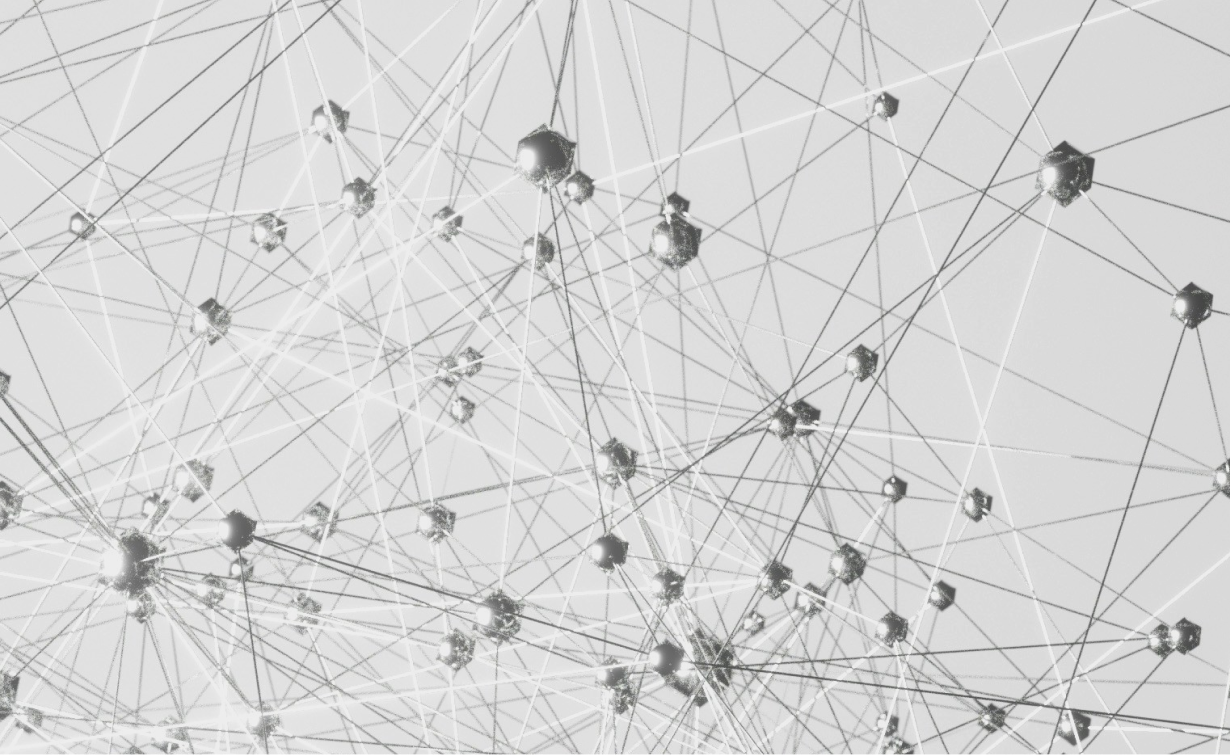What are Scope 1, Scope 2 and Scope 3 carbon emissions?

Global emissions continue to rise at an alarming rate, with energy-related CO₂ emissions reaching a record 37.4 billion tons in 2023, up 1.1% from the previous year. This dramatic increase underscores the urgent need for organizations to measure, manage, and reduce their carbon footprint.
To do this effectively, the Greenhouse Gas (GHG) Protocol provides a structured framework by categorizing emissions into three scopes:
- Scope 1 (direct emissions from company-owned assets like fuel combustion)
- Scope 2 (indirect emissions from purchased energy, such as electricity)
- Scope 3 (all other indirect emissions from the value chain, such as supplier activities and product use by customers)
The Corporate Sustainability Reporting Directive (CSRD) requires large companies in the EU to report on Scope 1, 2 and 3 emissions, ensuring transparency and accountability. By complying with both the GHG Protocol and the CSRD, companies can better manage their environmental impacts, contribute to global climate goals, and remain competitive in an ever-tightening regulatory landscape.
Definitions and examples of Scope 1, Scope 2 and Scope 3 emissions
Scope 1: Direct emissions from your company's operations
Scope 1 includes all direct emissions from company-owned or controlled sources, such as fuel combustion in vehicles, machinery, and industrial equipment. It’s categorized into:
- Stationary combustion (e.g. boilers, furnaces)
- Mobile combustion (e.g., company cars, trucks)
- Fugitive emissions (e.g. refrigerant leaks)
- Process emissions (e.g. chemical reactions in cement production)
Scope 1 is the easiest to manage because it's under the direct control of the company.
Example Corporate machinery or vehicle fleets: Scope 1 emissions come from direct fuel combustion in company-owned assets such as machinery, boilers, or vehicles. For example, a manufacturing company would generate emissions from burning natural gas in its boilers or diesel in its truck fleet.
Scope 2: Indirect emissions from purchased energy
Scope 2 covers indirect emissions from purchased energy such as electricity, heating or cooling. These emissions occur where the energy is produced. Key categories include
- Purchased energy: Emissions from electricity and other energy sources purchased by a company.
- Steam: Emissions from the purchase and use of steam in industrial processes or building operations.
- Purchased Heat: Emissions from external heat sources purchased for use in operations.
- Purchased Cooling: Emissions from externally purchased cooling systems.
Scope 2 reductions can be achieved through energy efficiency and renewable energy.
Example Purchased electricity: Scope 2 emissions result from purchased electricity used in company operations, such as powering offices or factories. For example, a data center would report emissions based on the grid electricity it consumes. Companies can reduce Scope 2 emissions by switching to renewable energy or purchasing renewable energy credits (RECs).
Scope 3: Tackle emissions across your entire value chain
Scope 3 covers all other indirect emissions in the company's value chain, often the largest source of emissions. In total, Scope 3 emissions are categorized into 8 upstream and 7 downstream types (see chart), including:
- Purchased goods and services: Emissions from the production of materials that the company purchases.
- Transportation and distribution: Emissions from the transportation of goods, both upstream and downstream.
- Waste: Emissions from the disposal of waste associated with operations.
- Employee commuting: Emissions from employee travel.
Scope 3 is the most complex, requiring data from suppliers and customers, but it often accounts for the largest portion of a company's total carbon footprint. On average, up to 75% of a company's total emissions are Scope 3.
Example Product Lifecycle Emissions: Scope 3 emissions cover indirect emissions throughout the value chain, including raw material extraction, product transportation and disposal. For example, a company that produces plastic packaging would report emissions from the production of plastic resins, transportation, and waste disposal by customers.
Overview of Scope 1, 2 and 3 emissions

Out-of-Scope emissions
Out-of-scope emissions are those that are not classified under Scope 1, 2 or 3 of the GHG Protocol. Examples include biogenic emissions (e.g. from biomass burning) and emissions beyond typical reporting, such as Scope 4, which refers to avoided emissions.
Scope 4 and Scope 5 emissions
Although not formally recognized, Scope 4 covers avoided emissions where a company's products or services reduce emissions elsewhere (e.g., energy-efficient technologies). Scope 5, while less defined, refers to emissions impacts beyond the direct value chain. What might be considered Scope 5 emissions are for example "societal impact emissions," which refer to indirect emissions related to societal behaviors that a company influences but does not directly control.
How to identify and reduce Scope 1, Scope 2, and Scope 3 emissions
Identifying emission sources
Reducing emissions starts with understanding where they originate within a company’s operations. To address Scope 1, 2, and 3 emissions effectively, businesses need to evaluate their entire value chain.
- Scope 1 Emission Sources: Companies track these emissions by logging fuel usage and applying relevant emissions factors.
- Scope 2 Emission Sources: Scope 2 emissions can be tracked by collecting data from energy bills and applying CO₂ emissions factors based on the local energy grid's mix
- Scope 3 Emission Sources: Scope 3 typically accounts for 75% of a company's emissions, making it critical to carbon reduction strategies. However, reducing these emissions is challenging due to the reliance on external data from suppliers and customers, or because of differences in global warming potential (GWP). GWP measures the ability of different greenhouse gases (GHGs) to trap heat in the atmosphere over a period of time compared to CO₂, with gases such as methane having a much higher GWP than CO₂. Identifying Scope 3 emissions therefore requires collaboration with suppliers and customers and often involves the use of life cycle analysis tools.
Mitigation and neutralization strategies
Once emission sources have been identified, companies can focus on reducing and neutralizing emissions through a variety of strategies. These actions should target all three areas to achieve meaningful emissions reductions.
- Energy efficiency improvements: Improving energy efficiency is often the first step in reducing both Scope 1 and 2 emissions. This could includesome text
- Upgrading machinery to more energy-efficient models.
- Optimizing fleet logistics to reduce fuel consumption.
- Improving building efficiency through insulation, smart HVAC systems, and efficient lighting.
- Switching to renewable energy: For Scope 2 emissions, companies can switch to renewable energy sources such as solar, wind, or geothermal. This can includesome text
- Generating renewable energy on-site (e.g., installing solar panels on company facilities).
- Purchasing renewable energy through contracts or energy certificates to offset traditional grid power consumption.
- Carbon offsetting and neutralization: For emissions that cannot be eliminated, companies can turn to carbon offsetting and neutralization strategies. These methods are particularly relevant for Scope 3 emissions, where complete reductions may not be feasible in the short term. Two primary methods includesome text
- Carbon credits: Purchasing carbon offsets from certified projects that capture or reduce CO₂, such as reforestation or renewable energy projects.
- Direct Air Capture (DAC): A growing technology that captures CO₂ directly from the air and stores it permanently. This helps neutralize unavoidable emissions and aligns with Net Zero strategies.
By implementing a combination of these strategies, companies can work to reduce their overall carbon footprint while aligning with global climate goals, such as those set by the Paris Agreement.
Navigating the GHG protocol and CSRD reporting requirements
GHG protocol
The Greenhouse Gas (GHG) Protocol is the globally recognized standard for categorizing, measuring, and reporting Scope 1, 2, and 3 emissions. Developed by the World Resources Institute (WRI) and the World Business Council for Sustainable Development (WBCSD), the GHG Protocol provides a comprehensive framework that helps companies calculate their emissions consistently and accurately.
The protocol is divided into several key components:
- Corporate Standard: Focuses on accounting and reporting emissions across the entire value chain (Scopes 1, 2, and 3).
- GHG Protocol Scope 3 Standard: Specifically designed to guide companies in measuring and managing emissions beyond their direct operations (Scope 3), which often constitute the largest portion of a company's total emissions.
By adhering to the GHG Protocol, businesses can ensure they meet global climate reporting standards, helping them align with international climate goals, improve transparency, and reduce their carbon footprint.
CSRD and other directives
In addition to the GHG Protocol, the Corporate Sustainability Reporting Directive (CSRD), introduced by the European Union, requires large companies to report their environmental and social impacts, including Scope 1, 2, and 3 emissions. CSRD is an expansion of the Non-Financial Reporting Directive (NFRD) and mandates companies with more than 250 employees, a turnover exceeding 50 million euros, or a balance sheet total above 25 million euros to disclose their carbon emissions.
Under CSRD, companies must:
- Disclose Scope 1, 2, and 3 emissions in accordance with the "comply-or-explain" principle, ensuring that even if a company is unable to provide complete data, it must justify why certain emissions are not included in the report.
- Follow specific reporting standards, such as the upcoming European Sustainability Reporting Standards (ESRS), which are aligned with the GHG Protocol and other global standards.
In summary, as sustainability regulations grow stricter, reporting across all three scopes is expected to become a standard requirement for businesses globally, particularly under frameworks like the GHG Protocol and CSRD.
How Tanso helps companies automate carbon reporting
Tanso provides a specialized software platform tailored to help industrial companies manage their Scope 1, 2 and 3 carbon emissions. Designed to simplify carbon accounting, the platform ensures compliance with critical regulations such as the CSRD and GHG Protocol, and streamlines the entire emissions reporting process.
- Automated Data Entry: Tanso simplifies the collection of emissions data by supporting multiple formats (e.g. CSV, Excel). This automated process reduces manual effort, ensuring greater accuracy and efficiency across departments and locations.
- Emission factor selection: Users have access to a comprehensive database of emission factors, including both industry-standard and vendor-specific factors. This ensures accurate calculations tailored to the company's specific reporting needs.
- Audit-ready reporting: The platform generates reports that comply with international regulatory standards, making audits and stakeholder communications seamless while ensuring compliance with frameworks such as CSRD.
- Advanced Analytics: Tanso's advanced analytics capabilities help companies track progress toward emissions reduction goals, identify hotspots, and make data-driven decisions to improve sustainability efforts

Outlook
As global emissions rise, businesses must urgently address their carbon footprint. The GHG Protocol's Scope 1, 2, and 3 framework is essential for measuring and reducing emissions, especially with growing regulations like the CSRD mandating comprehensive reporting.
Looking ahead, companies that prioritize sustainability will not only comply with regulations but also gain a competitive edge in a low-carbon economy. Leveraging tools like Tanso for automated emissions tracking and investing in renewable energy will be key steps toward achieving net-zero and leading the transition to a sustainable future.
FAQ: Common questions about Scope 1, 2 and 3 emissions
What are Scope 1, 2, and 3 emissions?
- Scope 1: Direct emissions from sources owned or controlled by a company (for example, fuel combustion in company vehicles).
- Scope 2: Indirect emissions from the use of purchased electricity, steam, heat, or cooling.
- Scope 3: All other indirect emissions that occur in the company's value chain, including both upstream and downstream activities (e.g., emissions from suppliers, product disposal by customers).
Does Net Zero Include Scope 3?
Yes, achieving Net Zero emissions includes reducing and offsetting Scope 1, 2, and 3 emissions. While many companies initially focus on Scope 1 and 2, reaching Net Zero goals requires addressing the entire carbon footprint, including Scope 3, which often accounts for the majority of total emissions. Organizations aligned with the Science Based Targets initiative (SBTi) commit to setting Net Zero targets that cover all three scopes. These targets are in line with the Paris Agreement and aim to reduce emissions to near-zero levels by 2050. SBTi emphasizes that companies must not only reduce emissions but also invest in carbon removal technologies to offset any remaining emissions, particularly in Scope 3.
How are Scope 1, 2 and 3 emissions calculated?
Scope 1 and 2: Typically calculated based on fuel and energy consumption data. Emissions factors are applied to convert this data to carbon emissions.
Scope 3: Requires detailed data collection from suppliers and customers throughout the value chain. Emission factors are also applied to convert this data into measurable emissions.
Is electricity Scope 1 or Scope 2?
Electricity is considered Scope 2 because it represents indirect emissions from purchased energy.
Is natural gas, diesel, propane, or steam Scope 1 or Scope 2?
Natural gas, diesel, and propane used in company-owned facilities are Scope 1 emissions (direct combustion). If steam or electricity is purchased from an external supplier, it falls under Scope 2 emissions.
What fuels are included in Scope 1?
Scope 1 includes all fuels used directly by the company, including diesel, gasoline, propane, natural gas, and other fossil fuels used in company-owned vehicles and equipment.
Are refrigerants Scope 1 or Scope 3?
Refrigerants are Scope 1 when they are released from company-owned equipment (e.g., leaks from air conditioners). For leased equipment, refrigerants may fall under Scope 3 emissions.
Is waste Scope 1, 2 or 3?
Waste management typically falls under Scope 3 emissions because it is an indirect activity that often occurs upstream (e.g., disposal by suppliers) or downstream (e.g., disposal by customers) in a company's operations.
How can I reduce Scope 1, 2, and 3 emissions?
- Scope 1: Improve fuel efficiency and switch to cleaner energy sources (e.g., biofuels or electrified fleets).
- Scope 2: Improve energy efficiency in operations and use renewable energy sources (e.g., solar, wind).
- Scope 3: Work with suppliers and customers to reduce emissions throughout the supply chain, switch to sustainable materials, and participate in carbon offset projects.
Is Scope 3 mandatory?
The requirement to report Scope 3 emissions depends on the regulatory framework. For example, the Corporate Sustainability Reporting Directive (CSRD) in the EU requires large companies to report on all scopes, including Scope 3.
What are Scope 4 and Scope 5?
- Scope 4: Refers to "avoided emissions", which are emissions avoided through the use of low-carbon products or services.
- Scope 5: A less formal, evolving concept that often refers to potential future emissions.
How do I calculate Scope 3 emissions?
Calculating Scope 3 emissions involves collecting data from suppliers and customers and applying appropriate emission factors. It is the most complex scope to measure because it involves many external parties and indirect activities.
Can Scope 3 emissions be offset?
Yes, companies can offset Scope 3 emissions through carbon credits or projects such as reforestation or carbon sequestration initiatives.
What is avoided carbon?
Avoided carbon refers to emissions that are prevented through the use of low- or no-carbon technologies, products or practices, and is often discussed in the context of Scope 4.
Why is Scope 3 important?
Scope 3 is often the largest contributor to a company's total emissions. Reducing Scope 3 emissions is critical to achieving meaningful reductions in a company's overall carbon footprint and meeting sustainability goals.
When did Scope 1, 2, 3 emissions start?
The concept of Scope 1, 2 and 3 emissions was introduced by the Greenhouse Gas Protocol, which was first published in 2001.










































.avif)







.jpg)
.jpg)




















-p-800.webp.avif)
-min-p-800.webp.avif)






-p-800.webp.avif)

